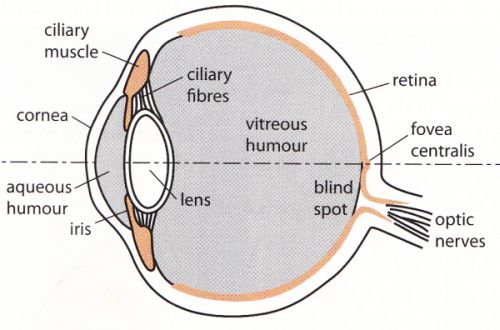The structure of the eye

1. The cornea is a layer of transparent skin that protects the eye.
2. The lens focus light on to the retina.
3. The retina turns light into nerve signals.
4. The nerve signals are sent to the brain via the optical nerve.
1 - Draw a picture of the eye and describe the structure.
5 - Explain how the retina works.
6 - Sketch a graph that explains how colour vision works.
9 - What is the visible spectrum ?
10 - What are the primary colours of light ?
11 - What are the secondary colours of light ?
13 -
What is perception ?